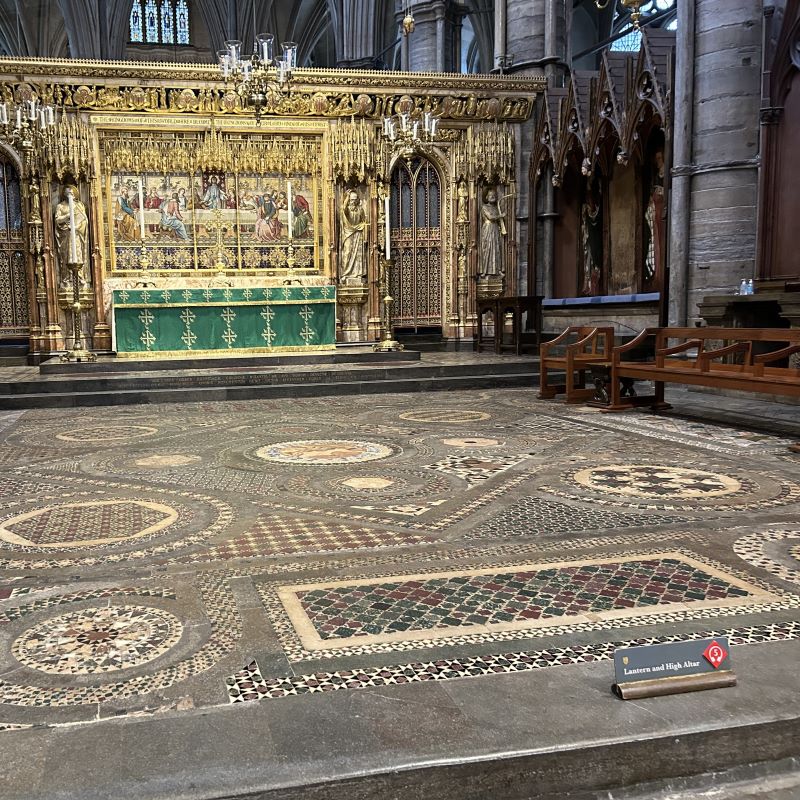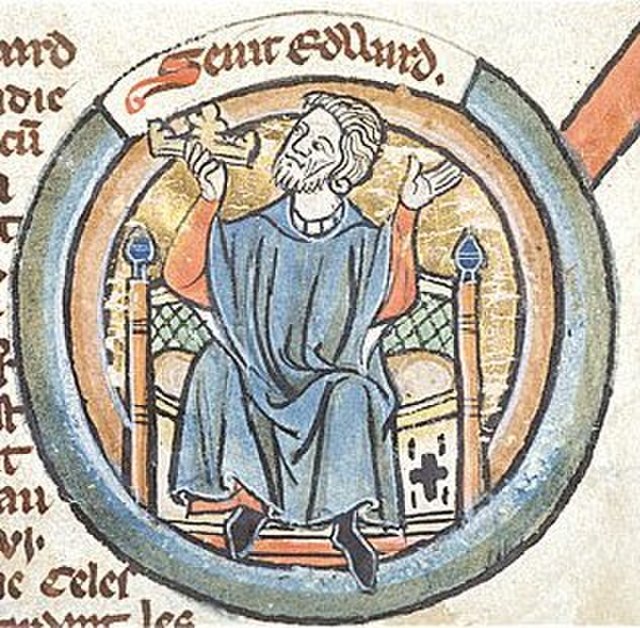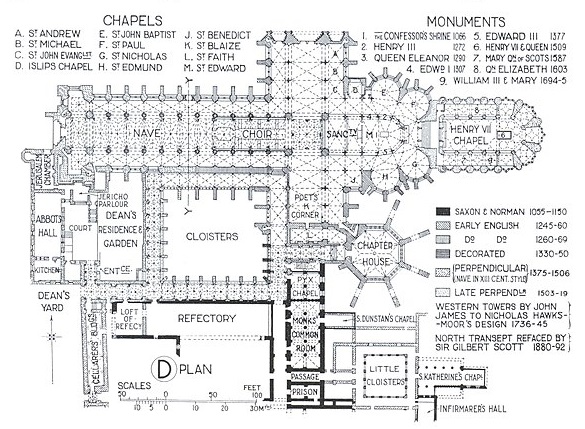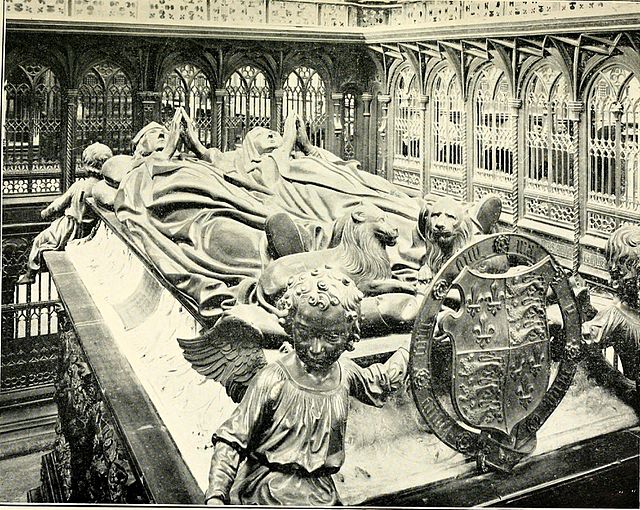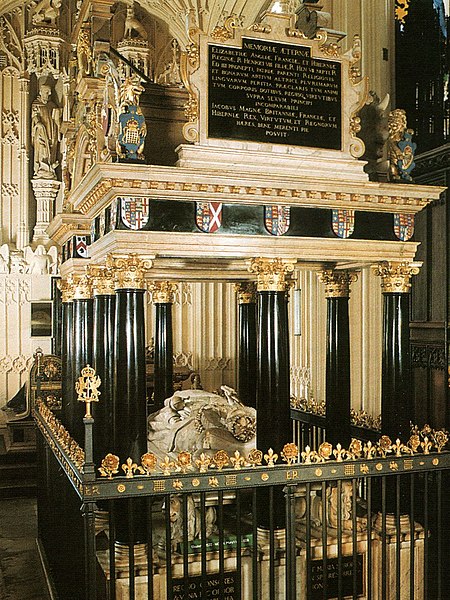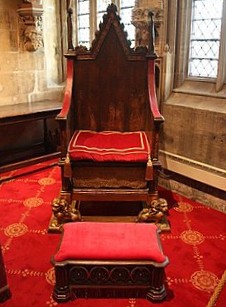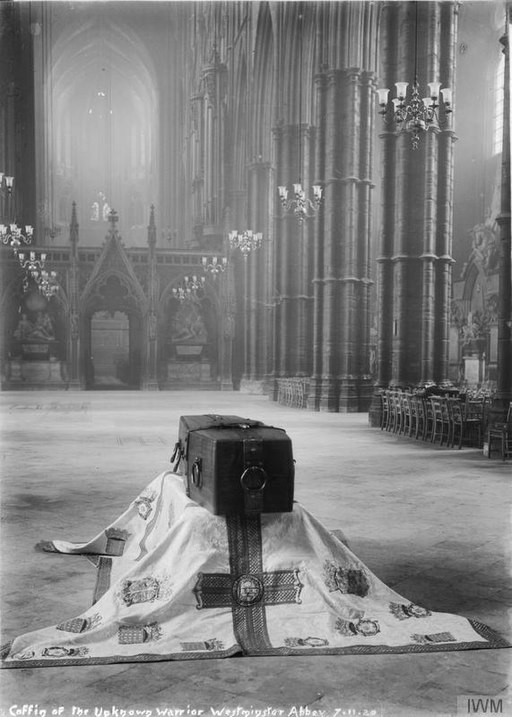Condensing a thousand years of Westminster Abbey history into a single post is no small feat, but knowing these details will certainly make your trip that much more enjoyable! Can’t make it right away? Check out this cool interior drone footage:
Getting There
Location: London, England
Nearest Tube Stops: Westminster or St. James’ Park
National Rail Stations: London Victoria or Waterloo (both 0.8 miles away)
Buses also available; check Transport for London for details
Time Travel Highlights
Time Period: Medieval
Must-See:
- Britain's oldest door (c. 1050)
- Chapter House medieval tile floor (c. 1250)
- St. Edward's Shrine (c. 1269)
- Coronation Chair (c. 1300)
- Henry VII Chapel (c. 1516)
- Royal Tombs
- Poet's Corner Memorials
Westminster Abbey History
Westminster Abbey’s history starts in 11th century England. The son of the English King Ethelred the Unready, young Edward, was living in exile in Normandy (where his mother was from) while the Danes were fighting for control of England.
The story goes, Edward made a vow that he would make a pilgrimage to St. Peter’s in Rome if he were safely returned to his kingdom. Eventually he did make it back to become King Edward the Confessor.
However, once he was crowned, he found he could not risk a visit to Rome. Luckily, the Pope agreed to release him from his vow if he would establish a monastery dedicated to St. Peter in England.
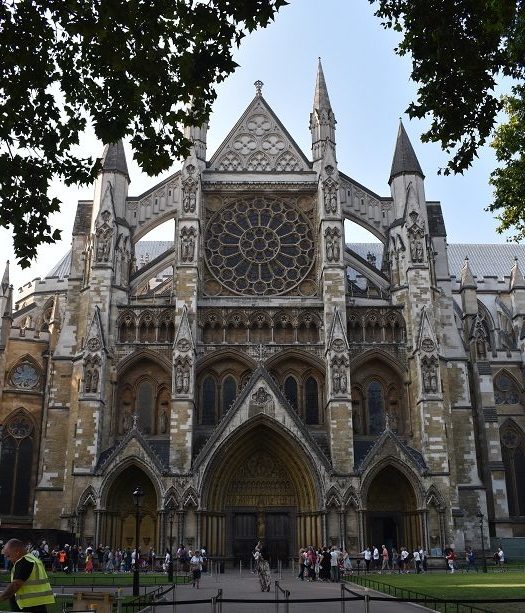
Edward chose to refound the Benedictine Abbey of St. Peter along the banks of the Thames River in London starting around 1050 AD. An earlier monastery had been at the site since about 960 AD and Edward wanted to build a more significant structure to honor his vow.
Likely as a result of his time spent in Normandy, Edward the Confessor chose to build a Norman-style church in Saxon England. It wouldn’t be too many years later that William the Conqueror of Normandy would win Edward’s crown in battle and become the first Norman king of England.
But that’s a story for another post…
1066 AD: The Abbey's big debut!
While the Abbey was under construction, Edward was also in the process of building a palace for himself, the Palace of Westminster, across the street from the Abbey. Today this is where the UK Parliament meet (the current building, however, is not Edward’s Palace, which was mostly destroyed in a fire in Victorian times).
Edward died one week after the church was consecrated, and he was buried in front of the high altar, in January 1066. A week later, King Harold II became the first English King crowned there.
Across the Channel in Normandy, William the Conqueror learned the crown he said he had been promised had been snatched away and, following a significant battle near Hastings, by the end of the year Westminster Abbey saw its second coronation, this time for King William I. 1066 was a busy year for the new Abbey!
The church Edward had built was much smaller than the structure we see today. Some of his original structures do survive at the Pyx chapel and monks’ common room sections (solid black lines on the sketch of the floorplan). There is also a large wooden door which is marked as “Britain’s Oldest Door”, believed to have been installed in the original church built by Edward circa 1050 AD. Be sure to visit the Chapter House to see the incredible medieval tile floor which dates to around 1250 AD.
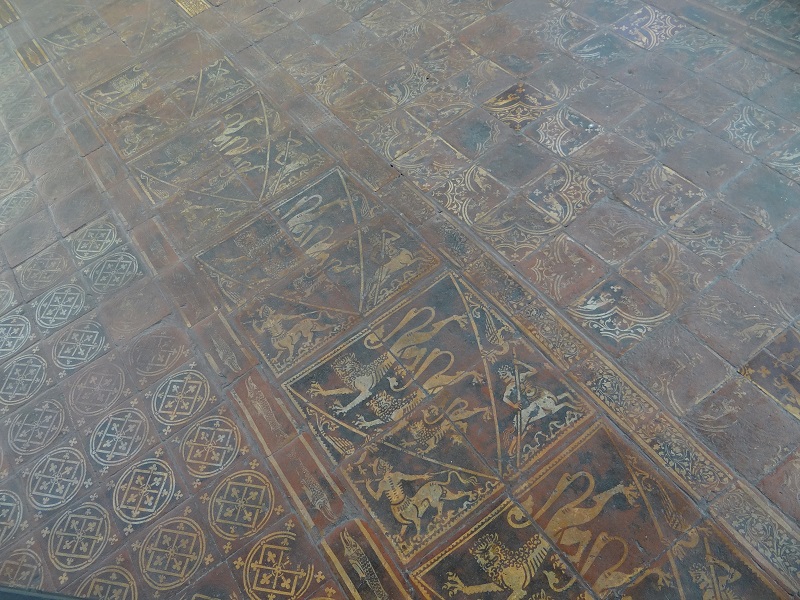
13th century - renovations begin
The building we know today started to take shape in the 13th century when King Henry III decided to rebuild the Abbey in the new Gothic style of architecture that was all the rage in Europe. It actually took several centuries and subsequent Monarchs to get to the final structure we see today. The western towers (the entrance Kate Middleton used for her 2011 wedding to Prince William) were only added in the 1740’s and the facade was rebuilt in the 1880’s, altering the rose window on the northern side.
Photographs are not allowed inside, which is why I’ve had to revert to so many public domain photos in this post.
The showcase tomb is the shrine of Edward the Confessor, which Henry III had built for this purpose in 1269. If you can take a guided tour I highly recommend it so you can access this private section of the church that is otherwise off-limits to visitors.
The open spaces under the tomb are for pilgrims to kneel in prayer at the shrine. There is a beautiful medieval mosaic floor up here as well; mostly covered for protection but some parts are exposed for visitors to see.
Other notable nobles in this section of the Abbey include Henry III, Edward I & Eleanor of Castile, Edward III & Philippa of Hainault, Richard II & Anne of Bohemia, and Henry V & Catherine de Valois.
Enter the Tudors
The next major chapter in Westminster Abbey’s history are the renovations by Henry VII in 1516. He added the rounded chapel on the east end which is now called the Henry VII Chapel.
Henry and his wife, Elizabeth of York, founders of the Tudor dynasty, are buried in this elaborate chapel. It’s absolutely beautiful and do be sure to look up to see the incredible stained glass windows and fan-vaulted ceiling.
Westminster was saved from the fate of so many churches destroyed following Henry VIII’s dissolution of the monasteries in 1540 when he designated the site as a cathedral church for the Church of England. His (Catholic) daughter Queen Mary I reverted it back to a Benedictine monastery in 1556 but it was returned to Parliament by Mary’s sister Queen Elizabeth I in 1560 fairly quickly after she ascended to the throne.
Elizabeth I reigned until her death in 1603 and was first buried at Westminster in the vault of her grandfather, Henry VII. Her successor, King James I later had a large marble monument built in a small side room off the Henry VII chapel in 1606. Her coffin was placed right on top of her half-sister, Queen Mary I in the same vault! Elizabeth’s is the only effigy on the tomb, but a plaque on the side does mention that “here rest we two sisters, Elizabeth and Mary”.
An equally elaborate tomb on the opposite side of the aisle from Mary & Elizabeth is the tomb James I built for his mother, Mary Queen of Scots in 1612.
Coronation Chair
Another highlight of a visit to the Abbey is a chance to see the Coronation Chair. This chair was made by King Edward I (aka the Hammer of the Scots) in the year 1300 after he brought back the Stone of Scone from Scotland following an invasion.
The Stone was used in Scottish royal coronations for centuries, so it was a significant gesture to take it back to England. Edward had a chair built to house it for coronations at Westminster Abbey and it had stayed there ever since. The stone was eventually (a looooong eventually – as in the 1990’s!) returned to Scotland, where it sits today. It will return to the Coronation Chair for future coronations.
The Chair is carefully maintained and even though it is over 700 years old, the oak chair still has some of the original gilding, decorated with patterns of birds, foliage and animals. There’s also some Victorian graffiti from when Westminster schoolboys would carve their names in it. Today it is housed in a specially-built enclosure at the west end of the Nave.
Queen's Jubilee Gallery
A jubilee is the celebration of a milestone in the reign of a monarch, and Queen Elizabeth II is the first British monarch to reach the Sapphire Jubilee (65 years on the throne in 2017) and is on track to reach her Platinum in 2022 (70 years on the throne!).
In celebration of her reign, Westminster Abbey has converted the medieval triforium (gallery area above the nave) into a museum of pieces from the Abbey’s collection. I toured the gallery in 2019 and it was magnificent.
Here you can see burial effigy masks, clothing, relics of the past and the marriage license of Prince William and Kate Middleton (it’s super fancy!). Tickets are required and available online (recommended so that you’re guaranteed entrance) or on site.
Westminster Abbey history is not just about royalty!
The Abbey website reports over 3,300 burials, monuments and commemorative wall tablets memorializing Kings, Queens, Politicians, Scientists, Poets, Writers and Musicians. It can be hard to find specific tombs or plaques, but for the most famous people just look for where people tend to cluster! You’ll typically see them around Chaucer, Shakespeare, Isaac Newton, Charles Darwin, Steven Hawking or the Bronte Sisters, to name just a few.
Just inside the West door is a very nice Memorial to an Unknown Warrior from WWI representing all the fallen soldiers who were never recovered. In a ceremony on Armistice Day 1920 (November 11) an Unknown Soldier recovered in France was buried in the Abbey.
(Modern) Westminster Abbey History
More recently, several 20th century Christians have had statues erected as modern martyrs. These statues can be found lined up above the western door of the Abbey and include figures like civil rights leaders Dr. Martin Luther King Jr from the United States, St. Oscar Romero from El Salvador, and Wang Zhiming from China.
Westminster is still an active church, with regular worship services and events going on. The website will be your best chance to find out when you can attend one of these events. Some will require tickets or advance planning.
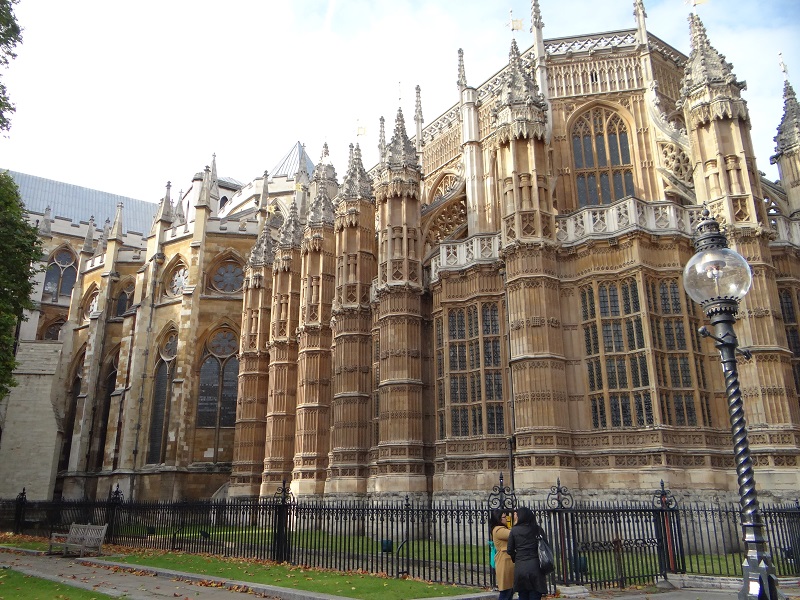
Inspired to visit Westminster Abbey? I highly recommend buying entry tickets in advance and securing a guided tour with a verger once you arrive (guided tours are not able to be booked in advance). Lines form early, so get there in advance to get a good look inside before the crowds really surge in. The multimedia guides are also pretty good and worth the 5 pounds.
Post Sources:
[bg_collapse view=”link” color=”#4a4949″ icon=”arrow” expand_text=”Show More” collapse_text=”Show Less” ]
Jenkyns, Richard. “Westminster Abbey: A thousand years of national pageantry.” London, Profile Books, 2011.
Westminster Abbey website. Accessed 11 May 2021.
[/bg_collapse]

